Cornflower Blue Flowers
Cornflower Blue Flowers are really popular and full of meaning and symbolism. They represent love, desire, and inspiration. Blue blooms are perfect for ambitious people to help inspire them and move them to action.
Furthermore, blue flowers are known for their calming effects and make wonderful gifts for loved ones.
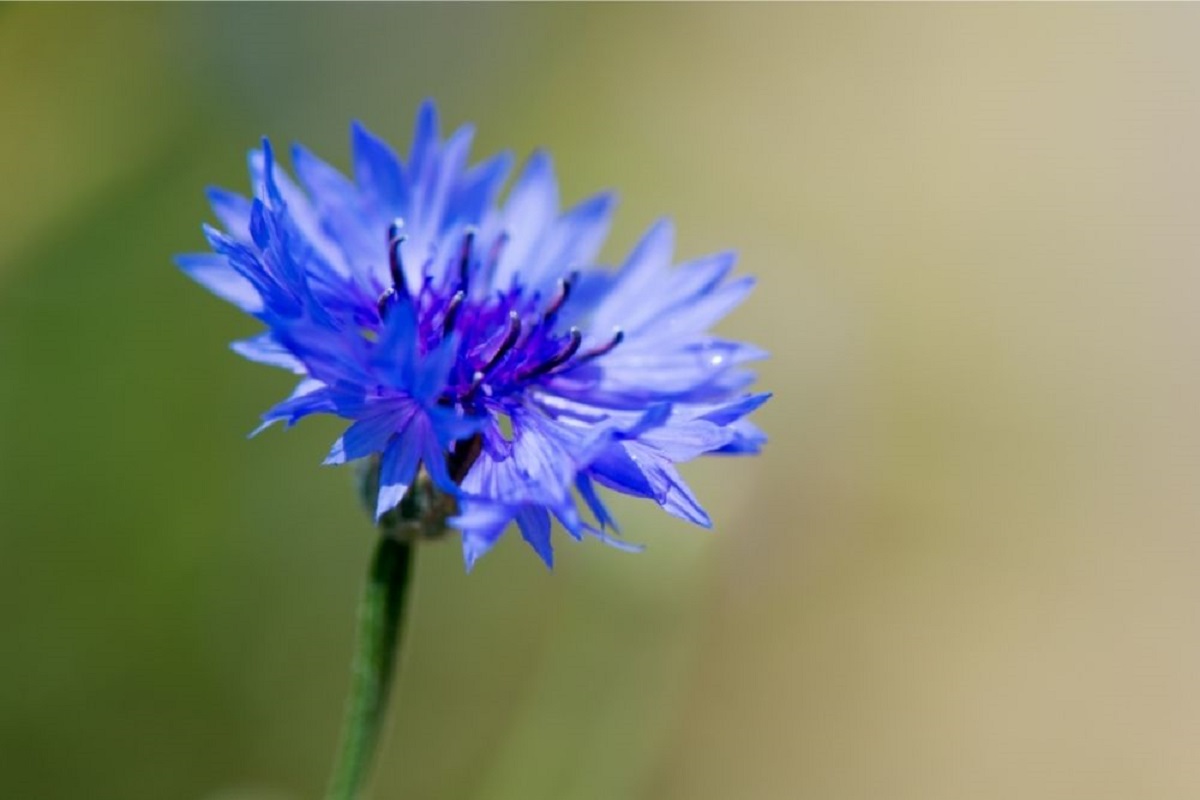
Cornflower blue is particularly stunning and there are lots of varieties to choose from. Surrounding yourself with blue flowers will give you are a sense of bringing the outside in, embracing the color of the sky and the sea. So, let’s have a look at some gorgeous cornflower blue flowers.
1. Cornflowers
Obviously, cornflowers are our first choice. These stunningly blue plants are a popular option for those wanting to attract wildlife into their garden. They are ideal for attracting butterflies and bees.
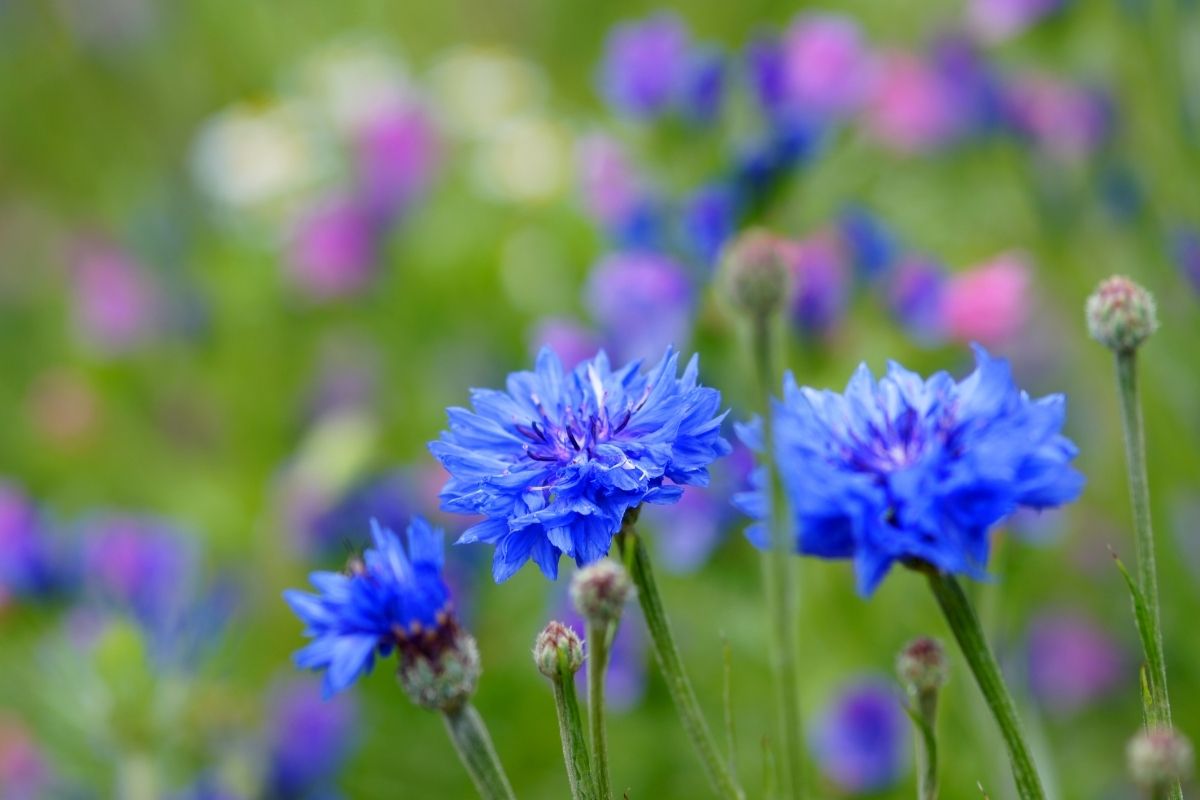
The flowers consist of 10 petals that flow out like trumpets. They enjoy full sun and need well-drained soil. It’s useful to add lots of organic matter to the soil, don’t let them become waterlogged or dry out.
It’s best to sow seeds between March and May outdoors, they will then flower between June and September. You could also sow during August/ September for a slightly earlier bloom the following year.
2. Scabiosa
These cute little plants are part of the honeysuckle family and consist of little blue and white flowers that sit on small stems. They are sometimes referred to as pin cushions as well as ‘butterfly blue’ as butterflies are attracted to them.
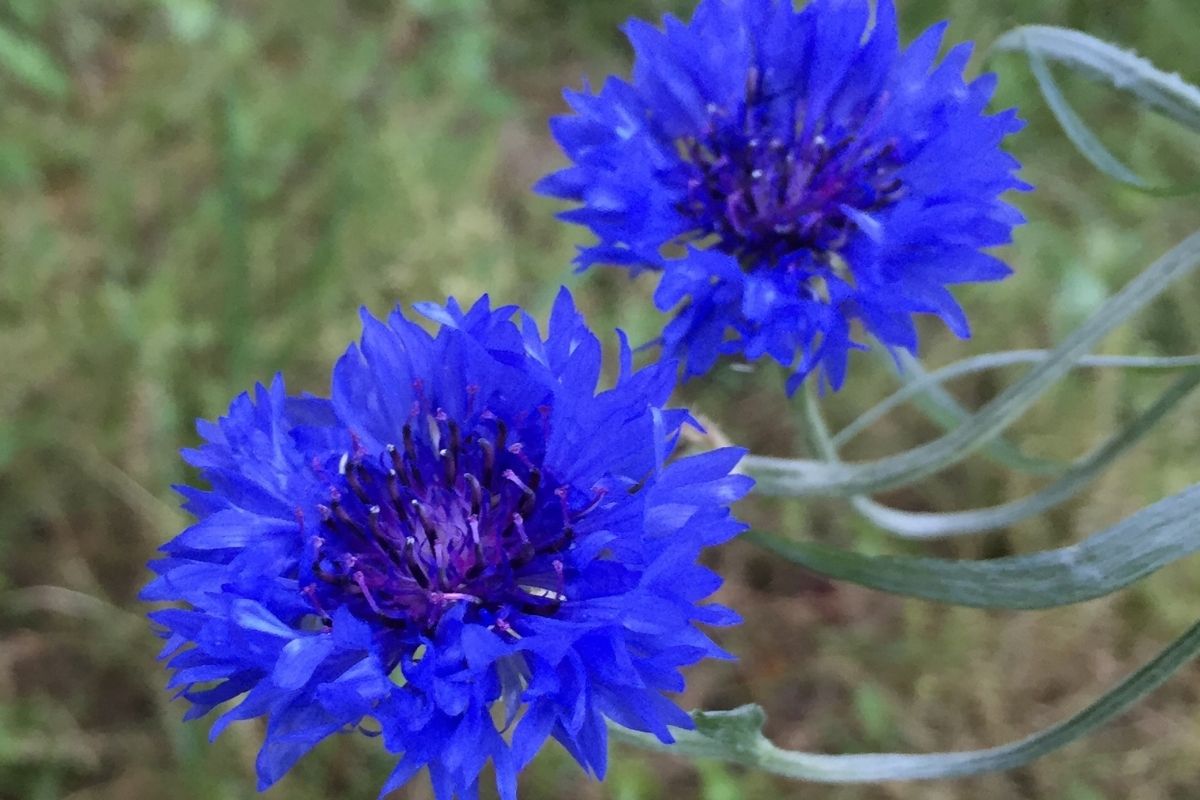
The flowers bloom between July and September. The scabious is long flowering and perfect for a rock garden with well-draining soil or added to a container for a summer display. Its cute appearance makes it ideal for wildlife borders and cottage gardens.
3. Stiff Blue-Eyed Grass
This beautiful flower will have birds flocking to your garden (not in a Hitchcock kind of way). It’s not actually a grass but a plant belonging to the iris family. They are native to North and South America. They are low-growing and consist of narrow leaves that look like grass and grow in grassy areas.
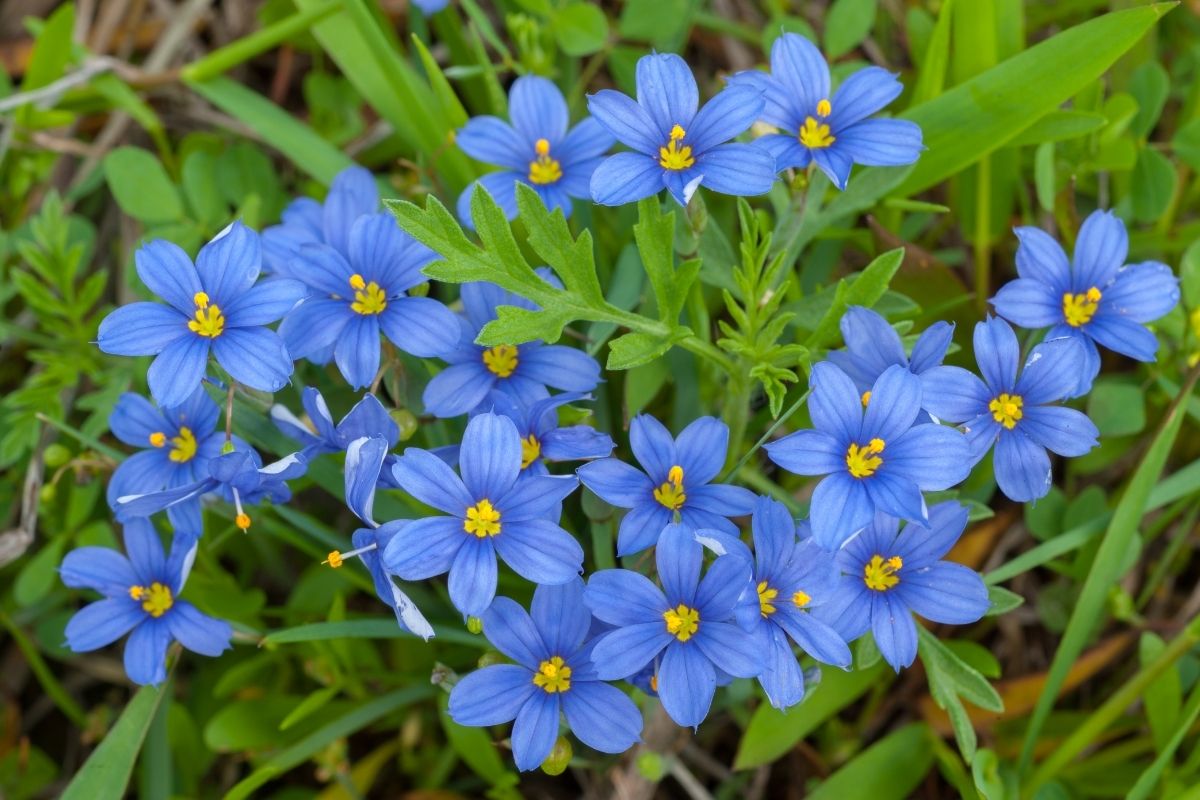
The flower offers blue-purple, star-shaped flowers that bloom in spring and early summer. They work well when placed along edging as a walkway or at the front of a cottage garden as a border.
They are a compact perennial and grow as a gradual spreading clump. Furthermore, they have sturdy leaves that remain upright and green throughout the growing season. They are also low maintenance and drought-resistant.
4. Desert Bluebells
These flowers are on the bright side of cornflower blue and are stunning with their bell-shaped petals. They are native to the Mohave desert in California.
They are classed as annual herbs and love dry soil and full sun. The plants stand erect and stiff, and the oval leaves are covered in fine hairs.
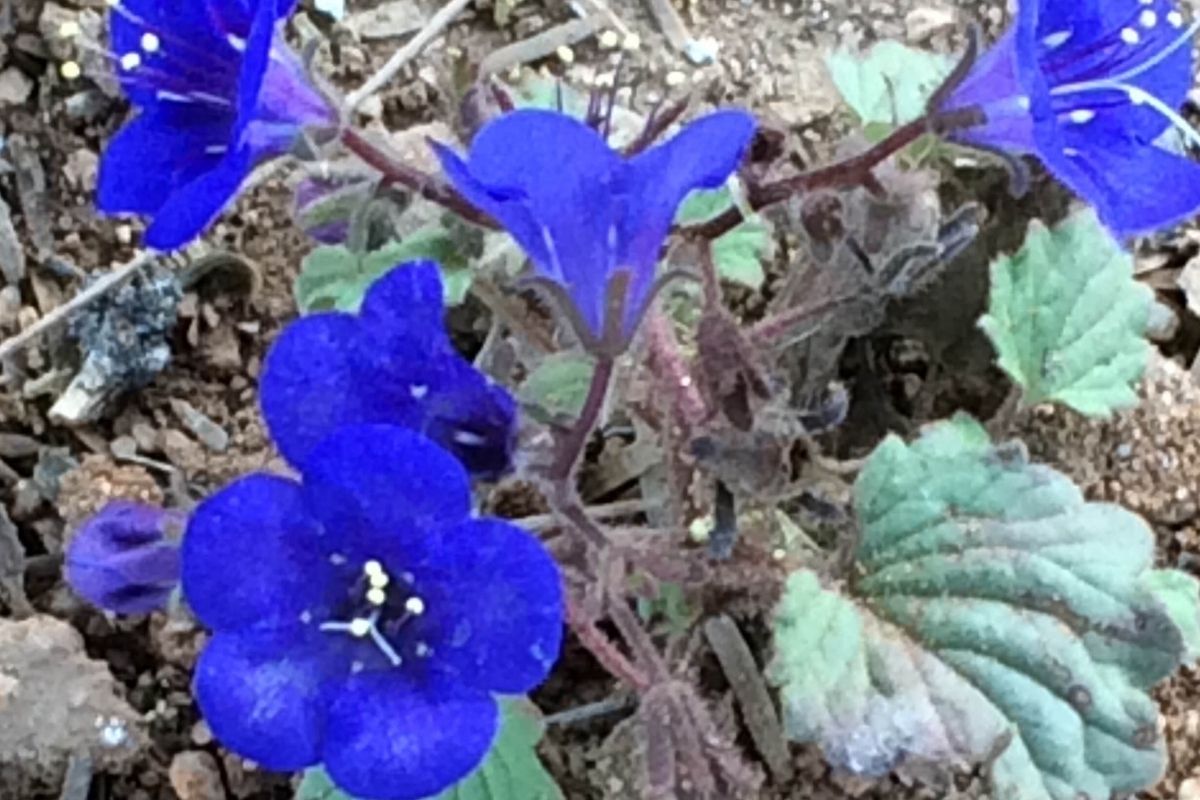
Although typically found in desserts, you can grow these plants in the garden and provide a wonderful mass of blooms. They need soil that is well-draining, sandy, and coarse. Flowers bloom around February and March and last approximately 4 weeks.
5. Blue Crown Passionflower
This hardy plant is super easy to grow and has an exotic appearance. It has five layers of petals that are predominantly blue with white ends.
When planted in full sun or partial shade, it thrives and will regrow each year even after a hard frost. It can grow from 10 to 40 feet tall and will flower from early summer right through the fall.
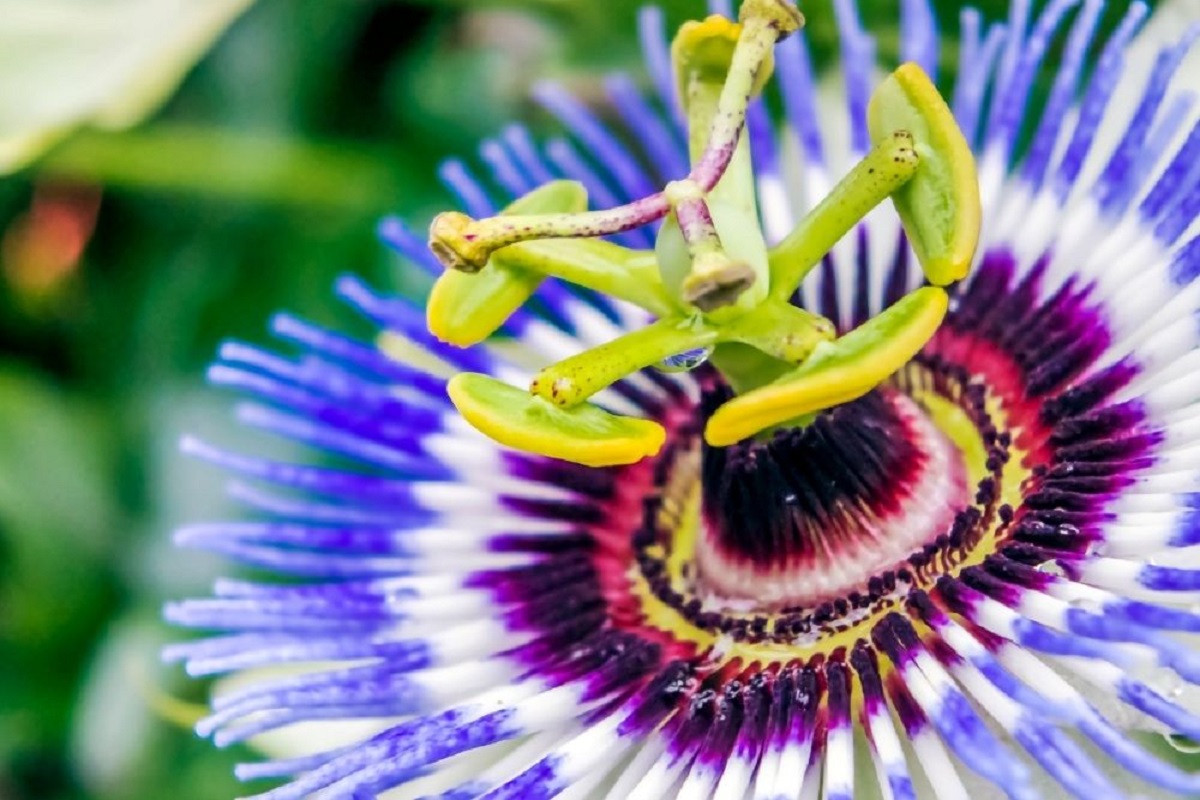
The Blue crown Passionflower is a showy ornamental and a great choice for cottage gardens, containers, trellises, fences, and walls. The tendrils stick to brickwork and fences, but won’t damage surfaces.
RELATED: Passion For Fashion: The Ultimate Guide To Passion Flowers
6. Larkspur
These annual plants produce airy flowers on tall stalks. They provide early flowering and are well worth the effort required to grow them. If you decide to grow them from seed, you should remember that they require a cold period before germination.
This can be achieved by keeping the seeds in the fridge. They should be filled for two weeks in zip lock bags before planting out.
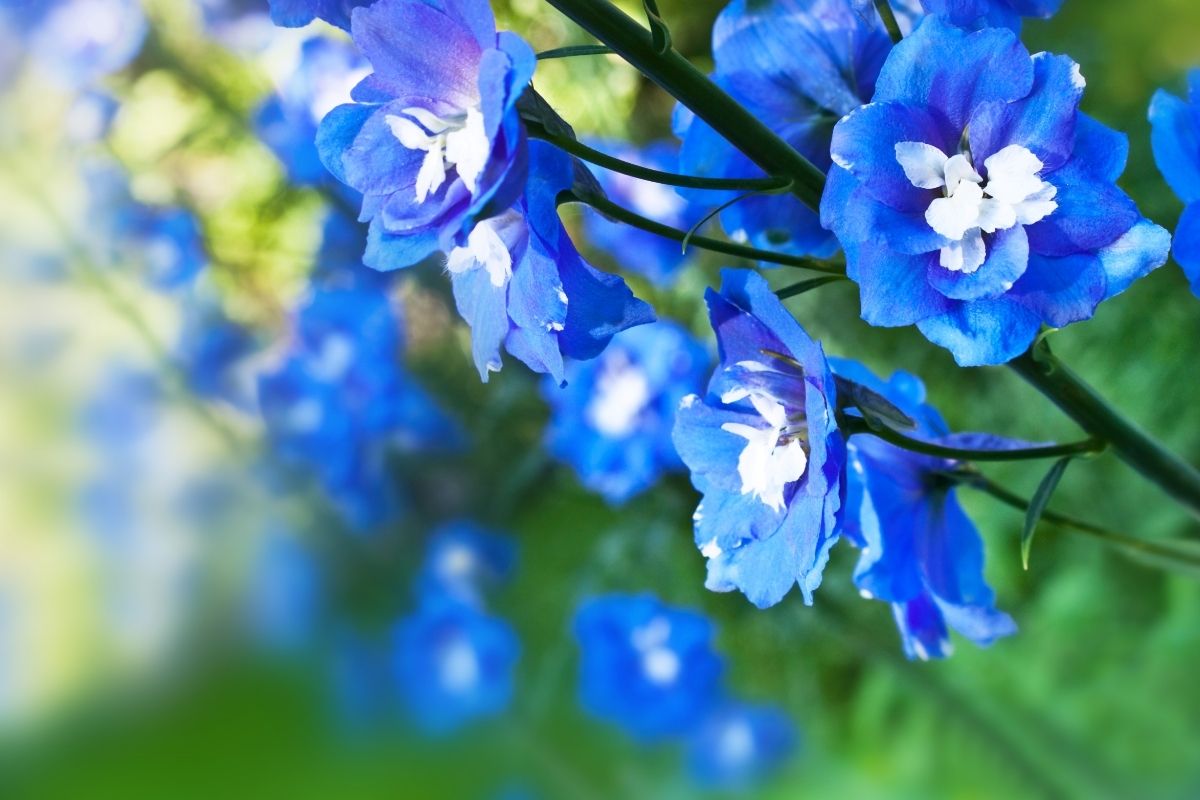
The plants need full sun and excellent soil drainage. If winter is mild then flowers will appear in Autumn and stay around until spring, providing a wonderful array of blooms to brighten up the winter months. Mixing in organic fertilizer will ensure that the plants flower more quickly.
7. Poormans Weatherglass
This fascinating and unique blue plant has been used in times past to predict the weather. When rain is near, the weatherglass’s blossoms close up and then open back up when the rain has passed.
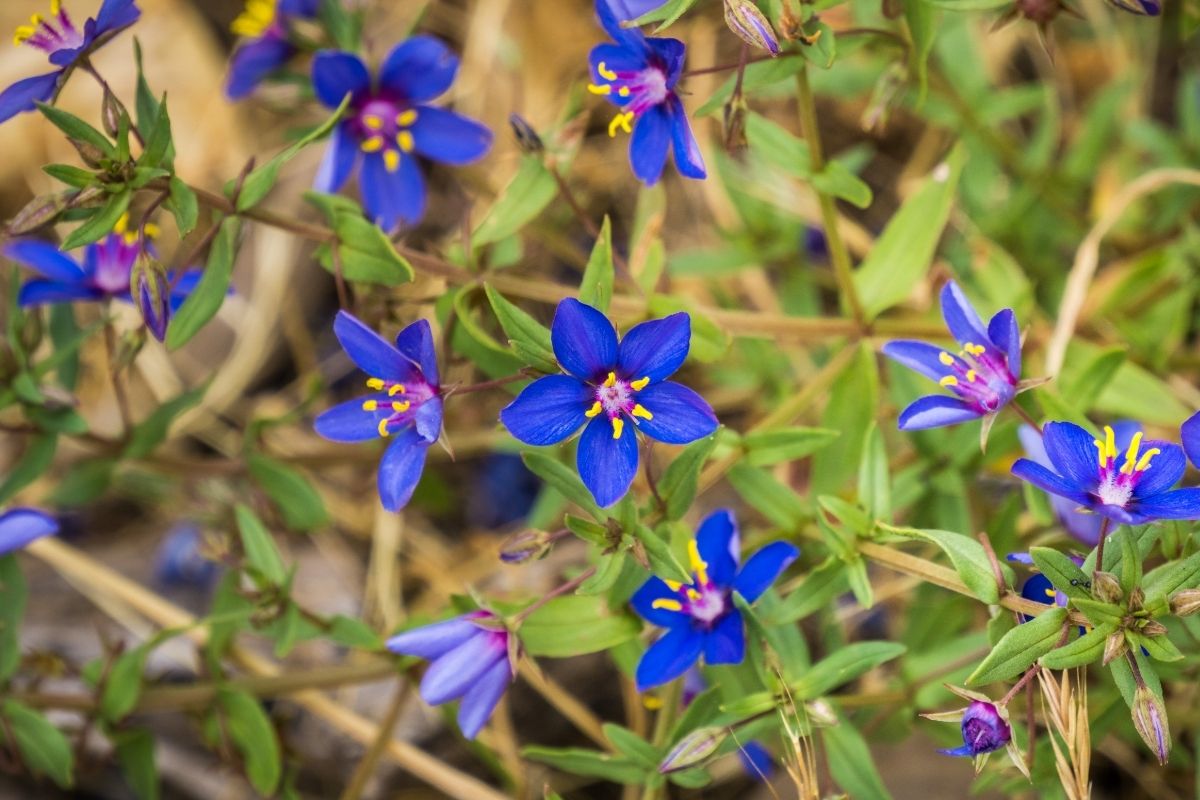
The plant is native to Europe and is an easy growing annual. Some gardeners consider the plant a weed, but the blooms are beautiful and well worth keeping within the flower bed setting.
They make a perfect addition to rock gardens, cottage gardens, containers, and patio pots. Plant seeds when the frost has passed, or start them indoors or in a greenhouse.
8. Glory Of The Snow
This plant lives up to its name and is one of the first flowering bulbs in the spring. If planted correctly, glory of the snow produces a glorious blanket of tiny flowers with blue star-shaped blooms.
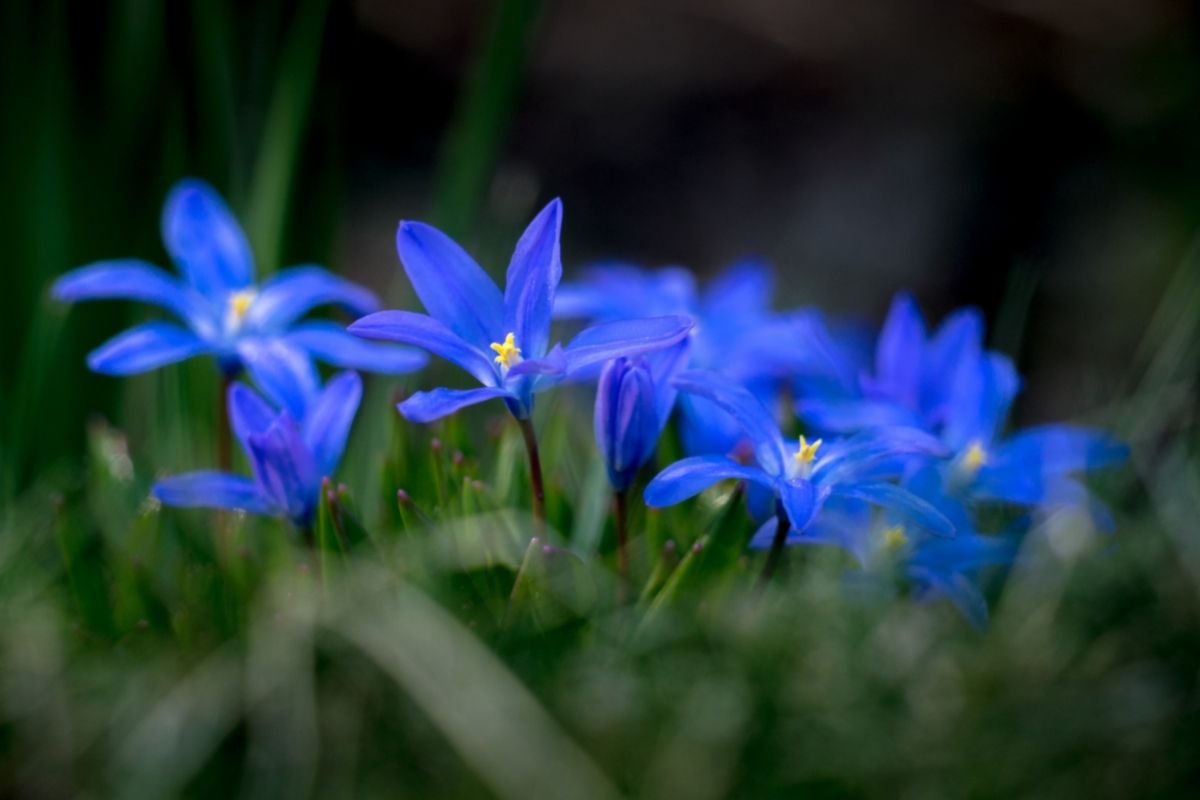
The plant needs full sun or partial shade for the best growth. It’s a good option for naturalizing lawns, especially beneath trees, where they can bloom in full sun before the tree leaf canopy is formed, thus creating shade.
9. Veronica
This spiky blue plant is great for creating height and contrast in flower beds. They can grow as tall as 3 feet (0.91 m) and bloom all through the season.
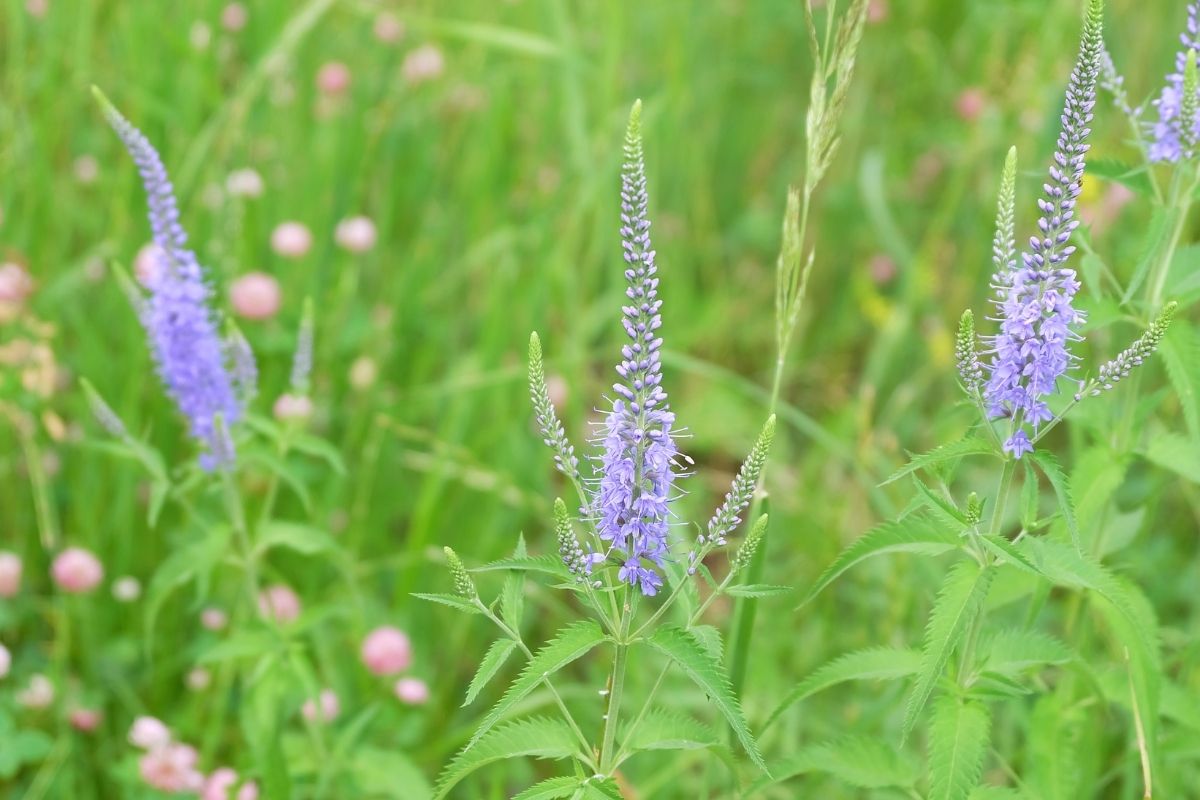
They are hardy plants and start to flower in late spring. The individual flowers are tiny but cluster together to create spiky upright plants. They are low maintenance and will likely grow back each year with minimal intervention.
Veronica’s are versatile and can be grown in a variety of places such as rockeries, borders, and raised beds or pond edges, depending on the variety. They should be grown in fertile and moist soil that has full sun or partial shade. Moisture-loving varieties can be grown in boggy soil or shallow water.
10. Sweet Peas
Sweet peas are a popular plant to grow as they produce beautiful and fragrant flowers throughout the summer. They are easy to grow and make glorious cut flowers to place around your home.

You should plant sweet peas in Autumn or Spring. It’s useful to pinch out the tips to encourage more growth. They are perfect for training to grow up trellises near a seating area so you can enjoy their gorgeous scent.
They are also ideal for growing in pots or containers with wigwams for support. Furthermore, they should be planted in a sunny position with moisture-retentive soil. Peat-free compost works well as an addition to normal soil.
11. Lobelia
Lobelia is almost a translucent blue and adds a touch of drama to hanging baskets. They are classed as an annual herb and grow well in cool conditions. It’s a fantastic addition to the garden, as it produces flowers right through to the first frost of the winter.
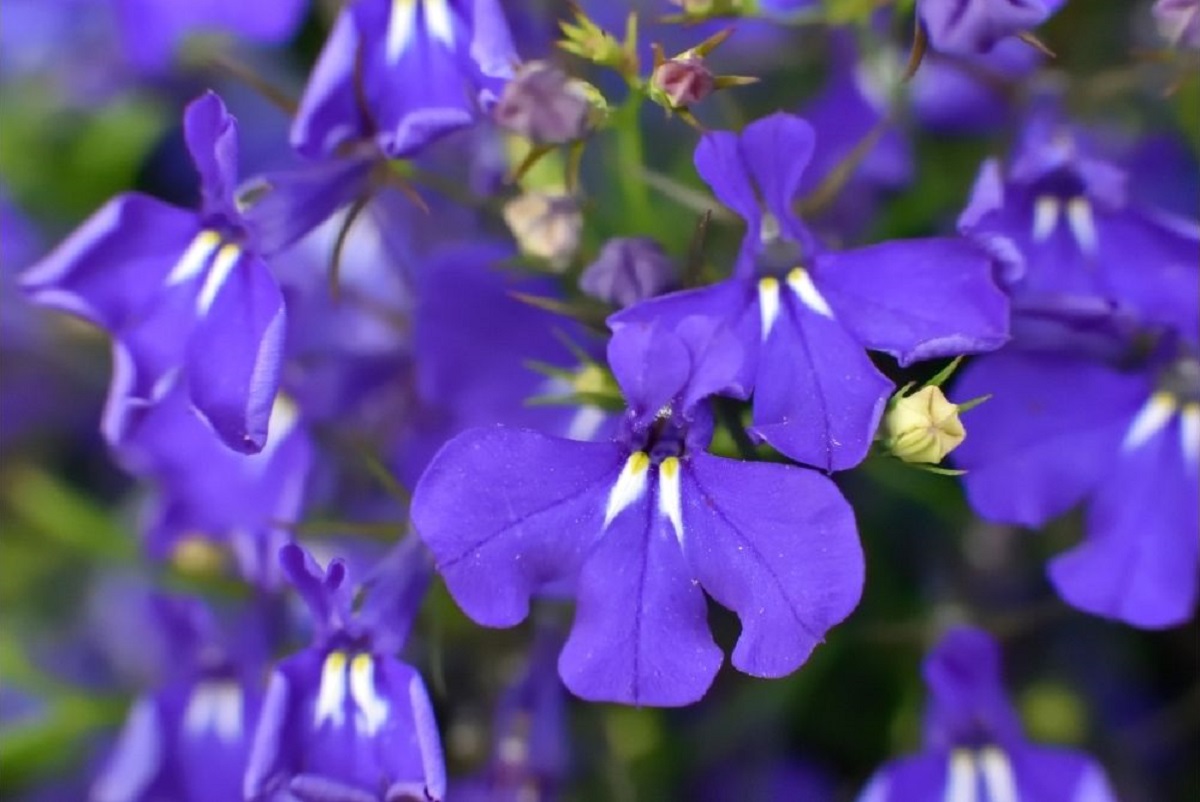
Luckily, lobelia will grow almost anywhere. They prefer full sun but tolerate shade as well as rich soil. You can start them indoor by sprinkling the seeds on top of the soil and watering them well. Keep them warm and plant them out after the frost.
12. Siberian Squill
The Siberian squill is a delicate flower that produces a mass of brilliant color in the early spring. The plant is native to Russia and comes in the form of a small bulb. They only grow 4-8 inches but spread out profusely. Furthermore, they multiply easily as well as self-seed, making them a popular choicer for naturalizing.
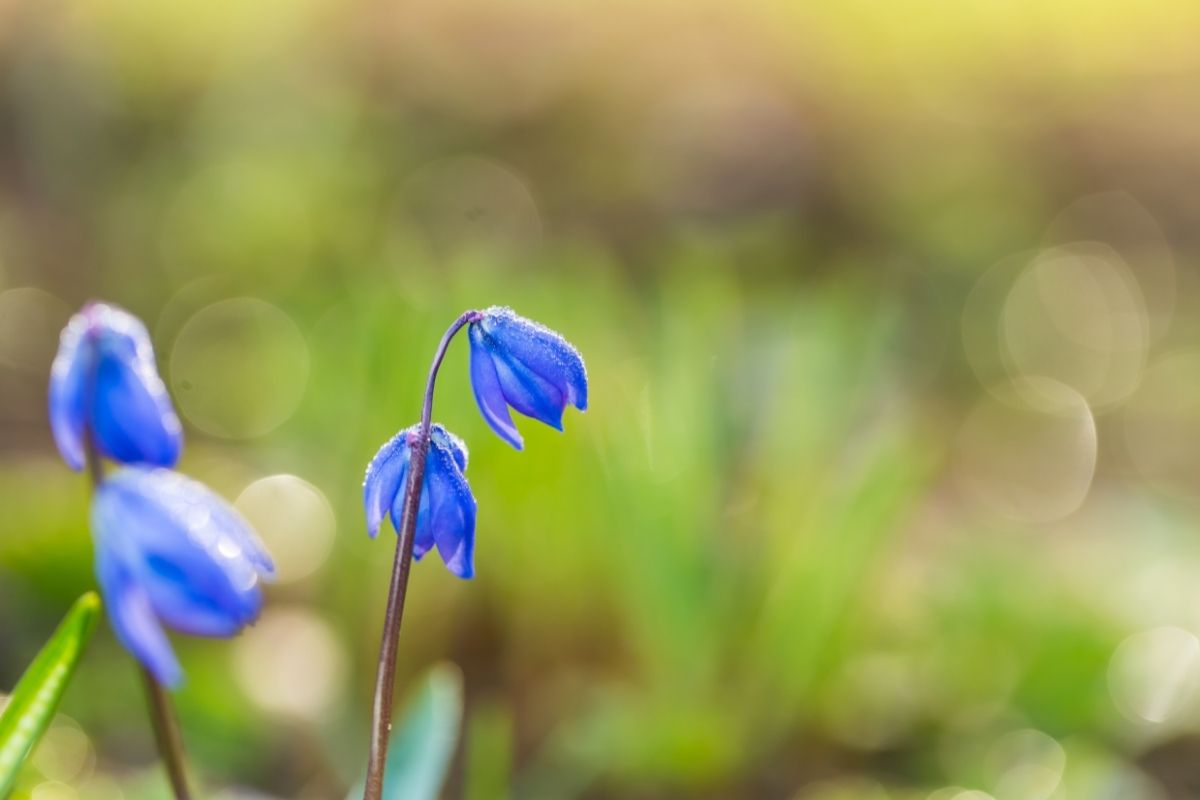
The flowers of the Siberian squill are bell or star-shaped and produce sword-like leaves that sit at the base of the plant.
As they are native to Siberia, the plant requires some cold in order to grow properly. It requires little maintenance and can be placed anywhere in the garden. To avoid bulb rot ensure it’s placed in good draining conditions, other than that it requires little intervention.
13. Love In A Mist
This beautifully named annual is native to North Africa and the Mediterranean. It grows fast and easily from seed.
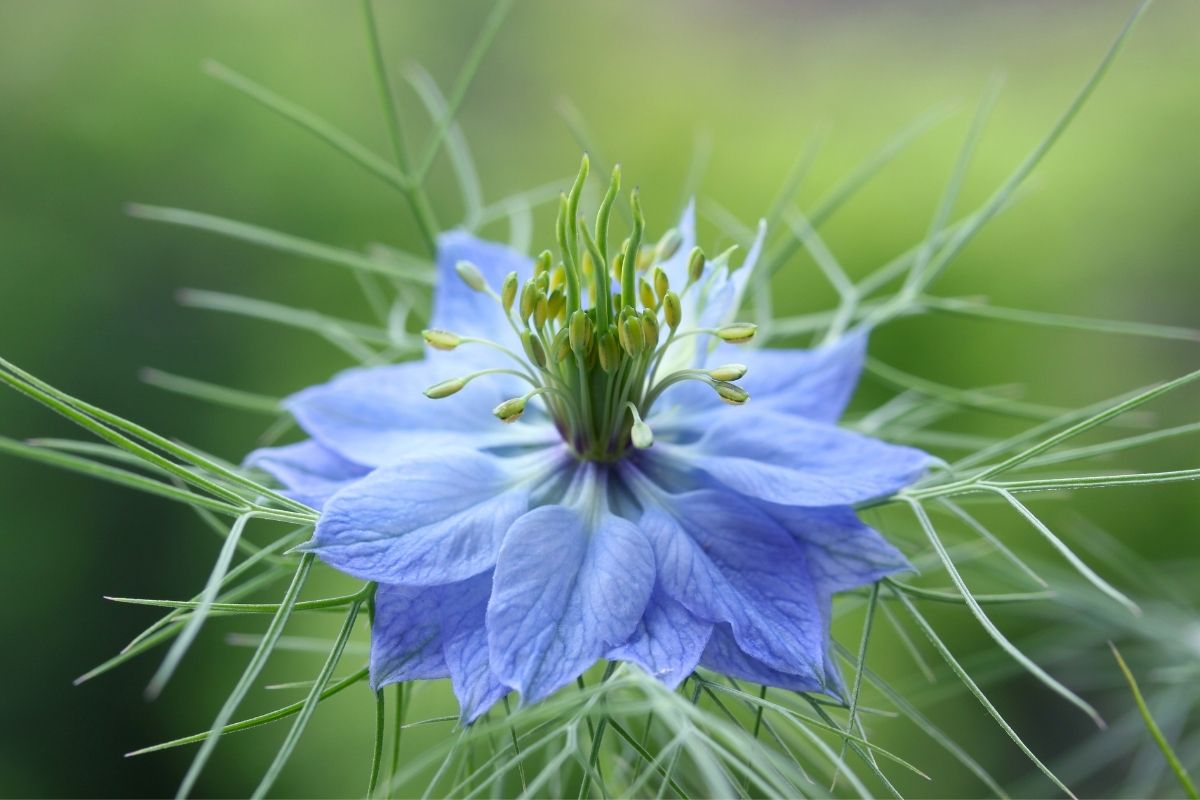
They bloom in summer on sleek upright stems covered in green feathery leaves and have large decorative seed pods. Love in a mist is also referred to as a ‘sow and forget’ annual, as you can sow seeds directly in the soil confident that they will germinate.
The plant makes an ideal and long-lasting cut flower, and you can utilize the seed heads that can be dried and used in decorative floral arrangements.
For love in a mist to thrive, well-drained soil is essential. Sow the seeds directly in the ground where you want them to flower and cover with 1 cm of soil. Water well if the ground is dry.
Thinning the seedlings to 10-15 cm apart will encourage sturdier and larger and individual plants.
Conclusion
So there you have it, a selection of some of the best cornflower blue plants that you can grow and that will make a wonderful addition to the garden.







